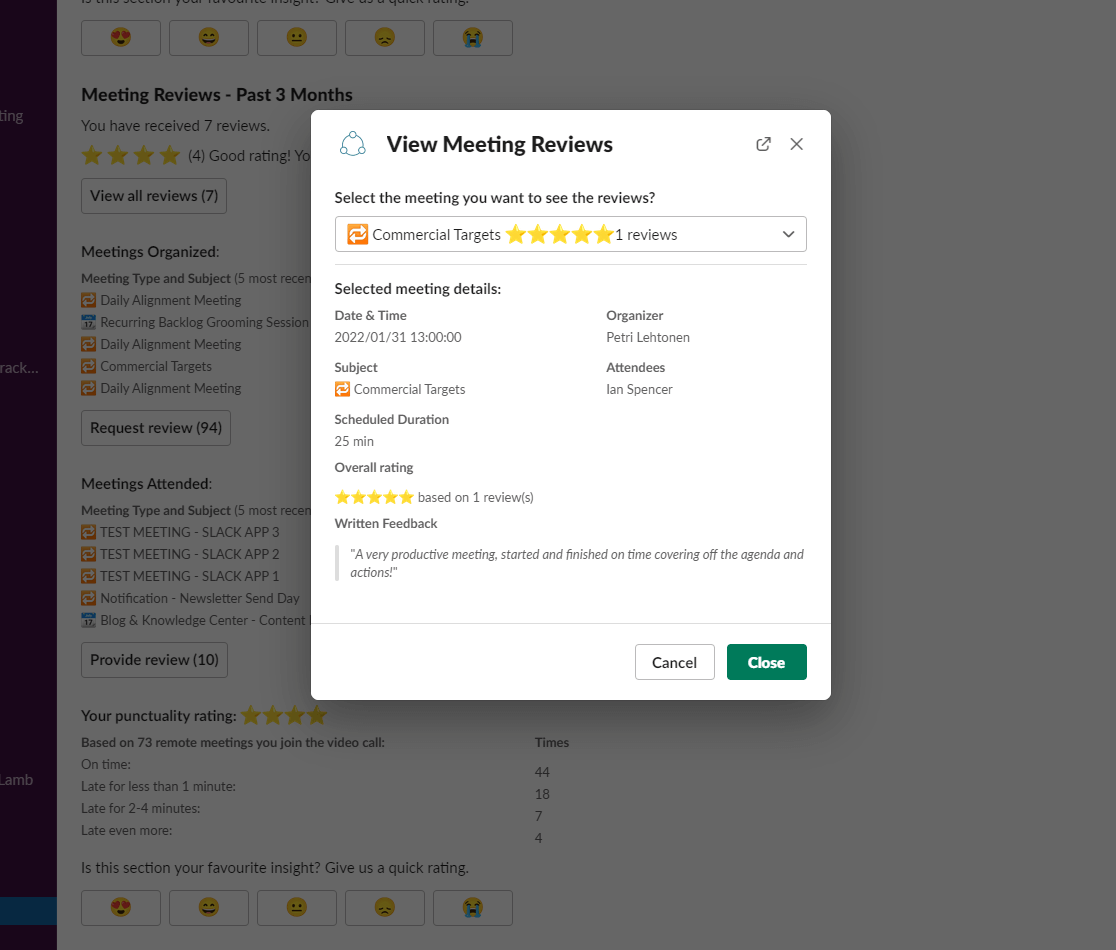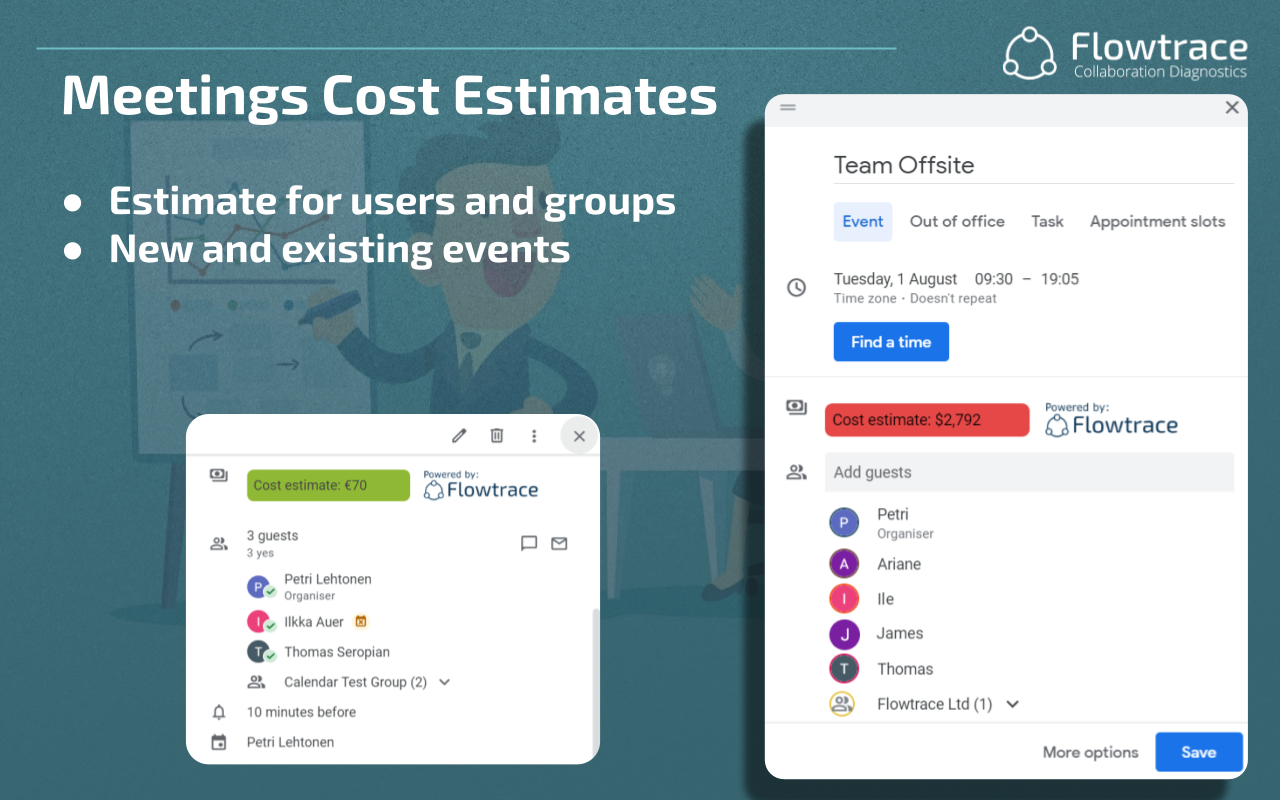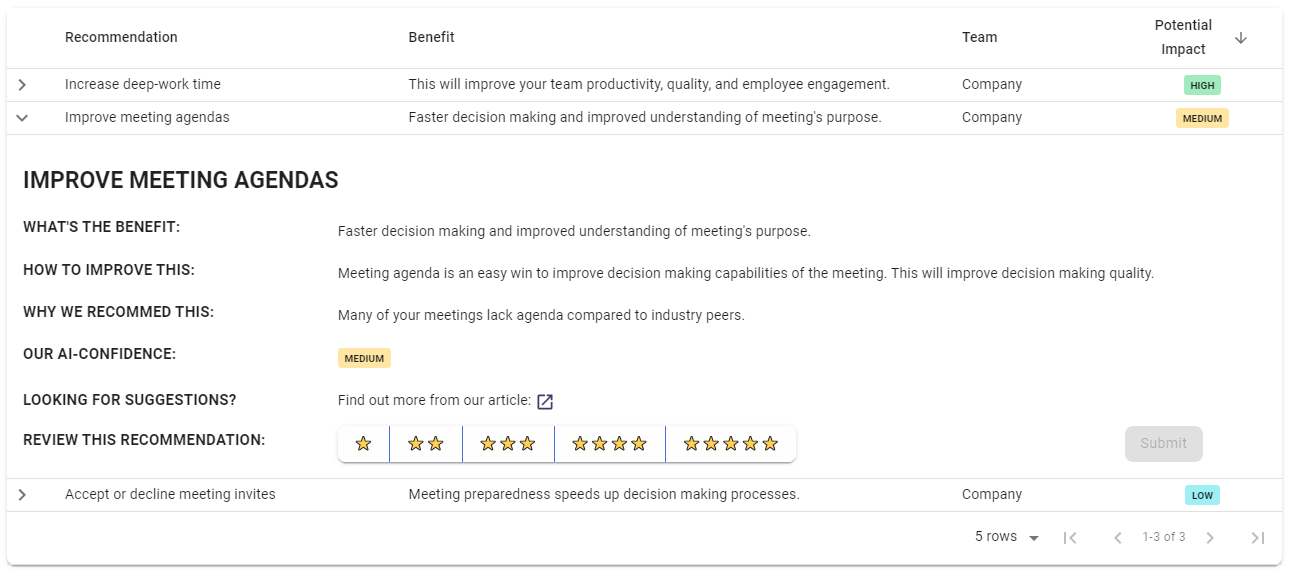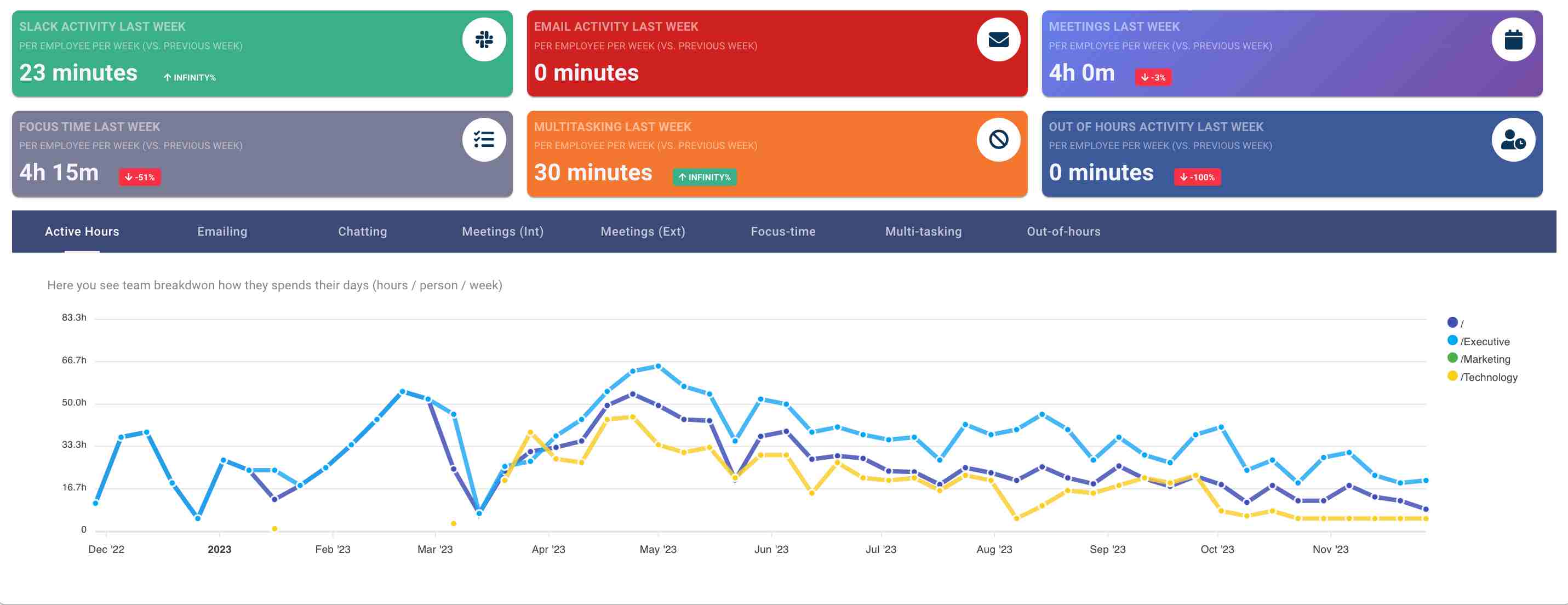Building a strong meeting culture is essential in shaping organizational dynamics and efficiency. A well-structured meeting culture streamlines decision-making, fosters better communication, and ensures that time spent in meetings is productive and engaging. Analytics are vital here, providing insights that can transform traditional meeting habits into data-driven practices. This approach not only optimizes meeting outcomes but also aligns them more closely with organizational goals, ultimately enhancing workplace productivity and effectiveness.

The Role of Analytics in Shaping Meeting Culture
Meeting analytics play a crucial role in defining and refining a productive meeting culture. By capturing data on meeting frequency, duration, participant engagement, and outcomes, analytics provide a detailed snapshot of how meetings are currently impacting organizational efficiency. For example, a study by Steven Rogelberg of UNC Charlotte reveals that executives spend an average of 23 hours per week in meetings, highlighting the potential for analytics to optimize this significant time investment.
By analyzing this data, organizations can identify patterns of inefficiency such as unnecessarily long meetings or low engagement levels, leading to targeted improvements. Enhancements might include adjusting meeting lengths, better scheduling, or reshaping agendas to enhance participation and focus. This data-driven approach ensures that meetings are not only necessary but are also constructive and aligned with strategic goals, ultimately boosting productivity and engagement across the board.
Using Data to Identify Inefficiencies
Utilizing data analytics can uncover significant inefficiencies in how meetings are conducted within organizations, such as frequent unproductive meetings or poorly scheduled ones. A notable study by Harvard Business Review indicates that executives average 23 hours per week in meetings, with 71% of senior managers considering these meetings unproductive and inefficient. This substantial time commitment underscores the need for strategic management of meeting practices.
Analytics help by providing clear metrics on meeting duration, frequency, and participant engagement, highlighting inefficiencies such as meetings without clear agendas, excessive length, or insufficient preparatory work. These insights allow organizations to streamline processes, ensure that meetings are both necessary and productive, and adjust schedules to maximize team performance.

By critically assessing these aspects, leaders can make informed decisions that significantly reduce wasted time and improve overall organizational productivity. Moreover, this approach fosters a culture where meetings are seen as valuable tools for collaboration and decision-making rather than time-consuming obligations.
Such strategic use of data not only optimizes individual and team performance but also aligns meeting practices closely with broader organizational goals, leading to more efficient and effective operations across the board.
Expanded Strategies for Data-Driven Meeting Optimization
Optimizing meetings with a data-driven approach involves detailed strategies to enhance efficiency and effectiveness:
- Dynamic Scheduling: Implement advanced algorithms that analyze historical meeting data regarding time slots and durations. This strategy helps in scheduling meetings during peak productivity times, adapting dynamically to changes in team workflows.
- Automated Feedback Collection: Systematically collect and analyze feedback from meeting participants regarding the meeting’s effectiveness and engagement. This continuous feedback loop aids in identifying strengths and areas for improvement in meeting management.

- Resource Allocation Analysis: Employ meeting analytics to determine the allocation of physical and digital resources for meetings. This helps in deciding which meetings can be conducted virtually to reduce costs and logistical burdens, and which require in-person attendance for maximum effectiveness.
- Predictive Analytics for Future Planning: Use predictive models to forecast future meeting needs based on trends and past data. This proactive approach minimizes last-minute scheduling, allowing for better preparedness and resource allocation.
- Enhancing Decision-making with Real-time Data: Utilize real-time data during meetings to aid in decision-making processes. This can include performance metrics and KPIs relevant to the meeting's agenda, providing a factual basis for discussions and decisions.
- Cost-Efficiency Tracking: Continuously monitor and evaluate the cost implications of meetings. Analyze data related to meeting length, frequency, and participant numbers against outcomes to ensure that meetings are cost-effective and contribute positively to organizational goals.
By integrating these strategies, organizations can transform their meeting cultures into more productive, engaging, and strategically focused operations, aligning closely with broader business objectives.

Flowtrace & Meeting Analytics
Meeting analytics offered by Flowtrace provide essential metrics for organizations to enhance their meeting culture, leading to improved efficiency, reduced costs, and better overall team performance:
- Real-Time Cost Monitoring: Flowtrace tracks and displays the costs of meetings as they happen, including the financial impact of delays. This helps organizations manage their budgets more effectively by providing clear visibility into the economic implications of their meeting practices.

- Productivity Metrics: Leaders can measure team performance and correlate it with meeting frequency. This allows for a detailed analysis of how meeting schedules impact productivity, helping to identify optimal meeting patterns that enhance overall performance.
- Meeting Frequency Analytics: By analyzing meeting frequency and the days and times they occur, Flowtrace helps prevent meeting overload. This ensures that meetings are scheduled at times that maximize productivity and minimize disruption.

- Real-Time Meeting Audit: Flowtrace provides the capability to conduct real-time audits of meetings. This feature enables immediate assessment of meeting effectiveness and helps in making on-the-spot adjustments to improve outcomes.
- Automated Feedback Workflow: Flowtrace streamlines the collection and analysis of participant feedback. Automated workflows ensure that feedback is consistently gathered and used to inform improvements in meeting practices.
- AI Recommendations: Leveraging industry-leading AI, Flowtrace identifies obstacles to effective team collaboration and offers practical, data-driven guidance for improvement. These recommendations help leaders implement changes that foster a more productive meeting culture.

Measuring the Impact of Analytics on Meeting Culture
To gauge the success of analytics-driven changes in meeting practices, organizations can track several key metrics:
- Meeting Efficiency: Measure the reduction in meeting duration and frequency, and assess if meetings are more focused and productive.
- Cost Savings: Calculate the financial savings from reduced meeting times and improved scheduling efficiency.
- Employee Productivity: Monitor changes in productivity levels by comparing performance metrics before and after implementing analytics-driven changes.

- Engagement Levels: Analyze participant feedback and engagement scores to determine if meetings are becoming more effective and engaging.
- Decision-Making Speed: Evaluate the time taken to reach decisions and implement action items, ensuring quicker and more efficient outcomes.
These metrics provide a comprehensive view of the effectiveness of analytics in transforming meeting culture, ensuring meetings contribute positively to organizational goals.
Start Using Meeting Analytics Today
By providing real-time cost monitoring, productivity metrics, and automated feedback, Flowtrace helps organizations streamline their meeting practices, enhance participant engagement, and optimize scheduling. This data empowers leaders to make data-driven decisions that significantly improve meeting efficiency and overall productivity. Try it today and build a more productive and efficient meeting culture.
